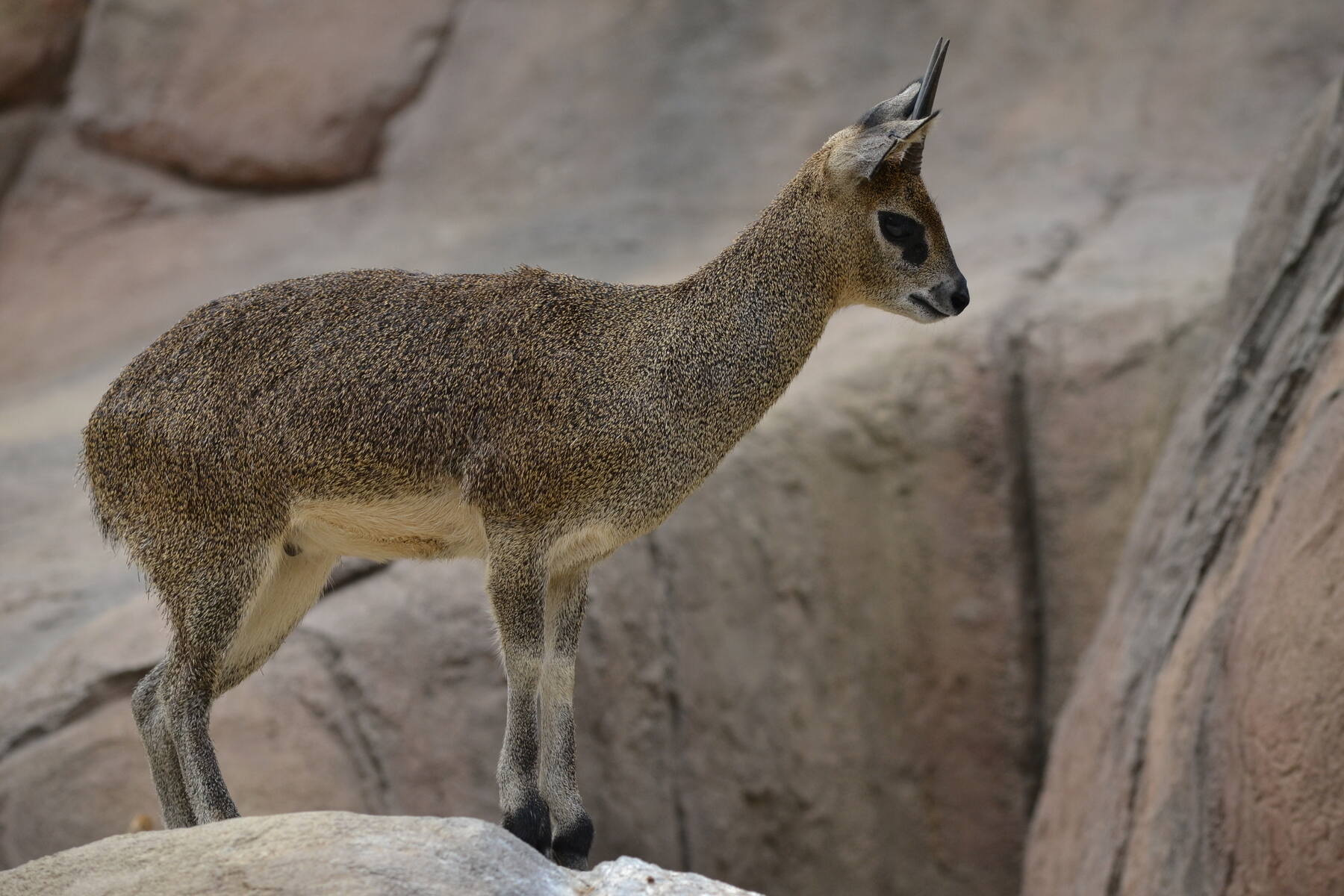
What makes the Klipspringer so unique? This small antelope, found in rocky terrains of eastern and southern Africa, has some fascinating traits. Klipspringers are known for their incredible agility, often seen leaping from rock to rock with ease. Their hooves are specially adapted, allowing them to balance on the tiniest surfaces. Unlike many other antelopes, they form monogamous pairs, staying with the same partner for life. Their fur is another standout feature—thick, coarse, and hollow, providing excellent insulation and protection. These antelopes are also highly territorial, marking their domain with scent glands. Klipspringers are primarily nocturnal, feeding on a diet of leaves, fruits, and flowers. Their ability to thrive in harsh, rocky environments makes them a true marvel of nature.
What is a Klipspringer?
The klipspringer is a small antelope found in eastern and southern Africa. Known for its remarkable agility and unique adaptations, this animal has many fascinating traits. Let's dive into some intriguing facts about this nimble creature.
Physical Characteristics
Klipspringers have distinct physical features that set them apart from other antelopes.
- Small Size: Klipspringers stand about 20 inches tall at the shoulder and weigh between 18 to 40 pounds.
- Hoof Structure: Their hooves are cylindrical and have a rubbery texture, allowing them to grip rocky surfaces easily.
- Coarse Fur: Their fur is dense and coarse, providing protection against sharp rocks and thorns.
- Coloration: Typically, their coat is a yellowish-brown, blending well with their rocky habitats.
- Large Eyes: They have large eyes positioned on the sides of their heads, giving them a wide field of vision to spot predators.
Habitat and Range
Klipspringers are adapted to live in some of the most rugged terrains in Africa.
- Rocky Terrain: They prefer rocky outcrops, cliffs, and gorges where they can easily escape predators.
- Geographical Range: Found in countries like Ethiopia, Kenya, Tanzania, South Africa, and Namibia.
- Altitude Adaptation: They can live at altitudes ranging from sea level to 13,000 feet.
- Territorial: Klipspringers are highly territorial and mark their territory with scent glands located on their faces.
- Water Independence: They can survive without drinking water for long periods, obtaining moisture from their food.
Behavior and Social Structure
Understanding their behavior gives insight into how they thrive in their environment.
- Monogamous Pairs: Klipspringers usually form lifelong monogamous pairs.
- Vigilant Lookouts: One partner often acts as a lookout while the other feeds.
- Communication: They communicate through whistling sounds and scent markings.
- Nocturnal Activity: Mostly active during the early morning and late afternoon, avoiding the midday heat.
- Leaping Ability: Known for their incredible leaping ability, they can jump up to 10 feet in a single bound.
Diet and Feeding Habits
Their diet is as unique as their physical and behavioral traits.
- Herbivorous Diet: Primarily feed on leaves, shoots, fruits, and flowers.
- Selective Feeding: They are selective feeders, choosing the most nutritious parts of plants.
- Low Water Needs: Obtain most of their water from the plants they consume.
- Digestive Efficiency: Have a highly efficient digestive system that extracts maximum nutrients from their food.
- Seasonal Diet Changes: Their diet changes with the seasons, adapting to the availability of different plants.
Predators and Threats
Despite their agility, klipspringers face numerous threats in the wild.
- Natural Predators: Leopards, eagles, and hyenas are their main predators.
- Human Encroachment: Habitat loss due to human activities poses a significant threat.
- Poaching: Hunted for their meat and hide, although not as commonly as other antelopes.
- Disease: Susceptible to diseases like anthrax and foot-and-mouth disease.
- Climate Change: Changes in climate can affect their food sources and habitat.
Reproduction and Lifespan
Reproduction is a crucial aspect of their life cycle, ensuring the survival of the species.
- Breeding Season: They can breed year-round, but births peak during the rainy season.
- Gestation Period: The gestation period lasts about six months.
- Single Offspring: Usually give birth to a single fawn.
- Parental Care: Both parents are involved in rearing the young.
- Lifespan: In the wild, they can live up to 15 years, while in captivity, they may live longer.
Conservation Status
Efforts are ongoing to ensure the survival of klipspringers in the wild.
- IUCN Status: Currently listed as Least Concern by the International Union for Conservation of Nature (IUCN).
- Conservation Efforts: Protected in several national parks and reserves across Africa, with ongoing efforts to mitigate human-wildlife conflict.
The Final Leap
Klipspringers are fascinating creatures. These small antelopes, with their unique hooves and incredible agility, navigate rocky terrains like no other. Their ability to jump up to 25 feet in a single bound is nothing short of amazing. They live in monogamous pairs, showcasing a rare bond in the animal kingdom. Their diet mainly consists of leaves, fruits, and flowers, making them true herbivores. Despite their small size, they have a loud, piercing whistle to alert others of danger.
Understanding these animals helps us appreciate the diversity of life on our planet. Their adaptations to harsh environments remind us of nature's resilience. Next time you think of antelopes, remember the klipspringer and its remarkable traits. These facts not only highlight their uniqueness but also underscore the importance of preserving their habitats. Let's cherish and protect these incredible creatures for future generations.
Was this page helpful?
Our commitment to delivering trustworthy and engaging content is at the heart of what we do. Each fact on our site is contributed by real users like you, bringing a wealth of diverse insights and information. To ensure the highest standards of accuracy and reliability, our dedicated editors meticulously review each submission. This process guarantees that the facts we share are not only fascinating but also credible. Trust in our commitment to quality and authenticity as you explore and learn with us.
